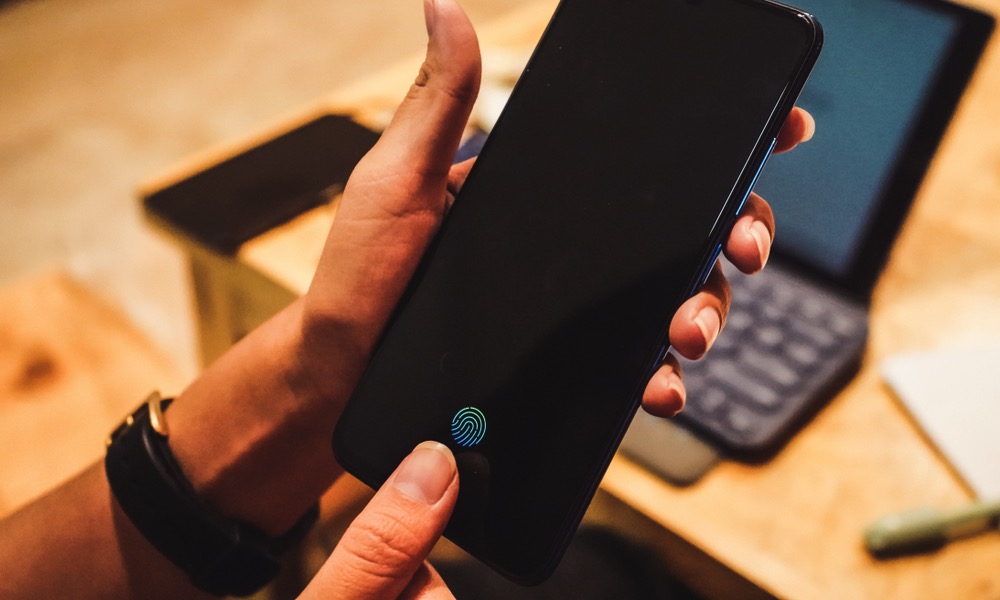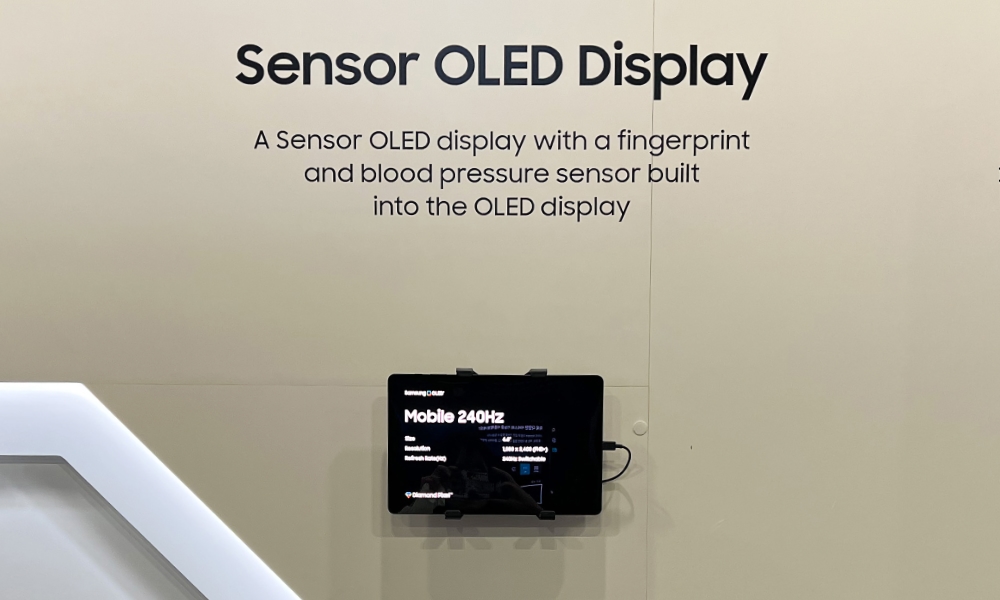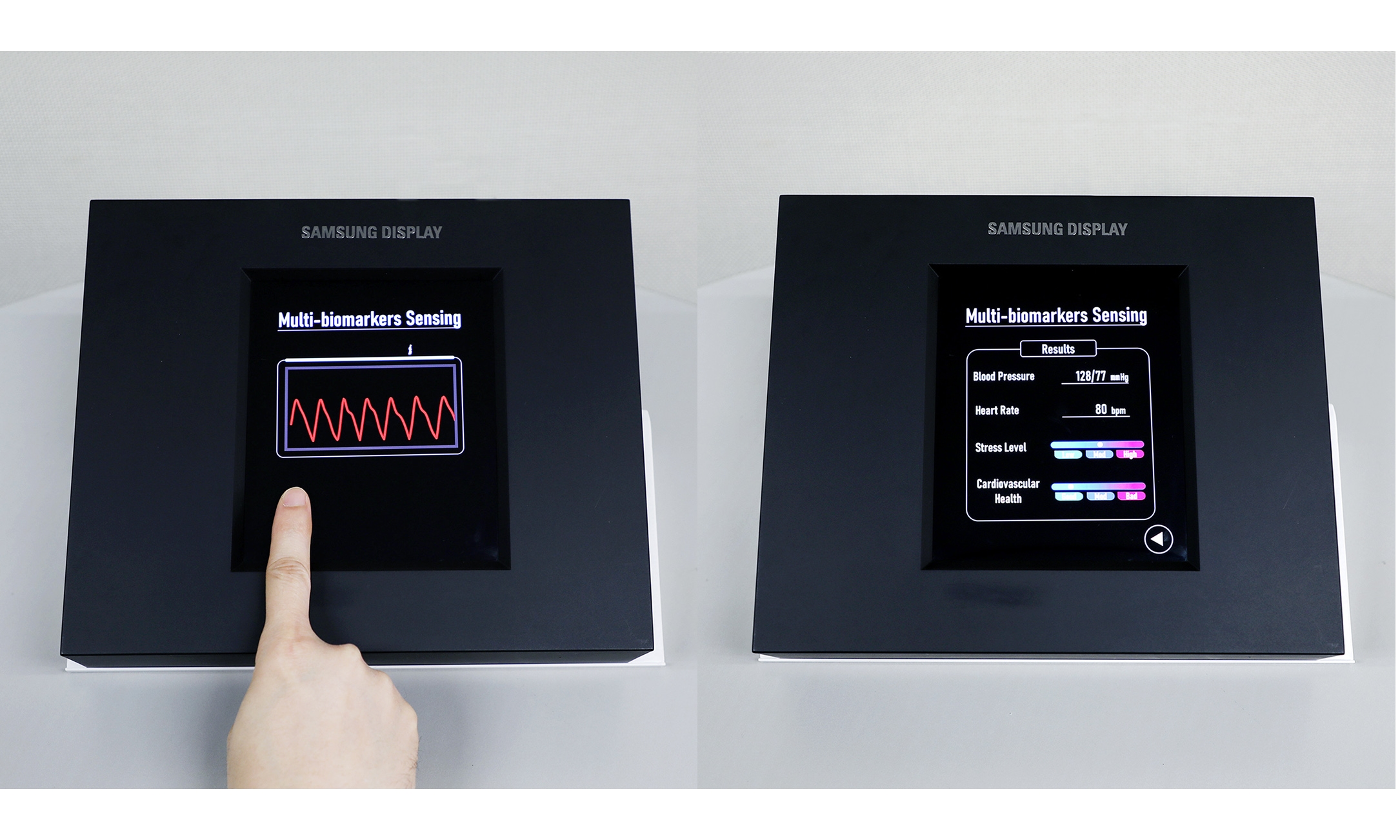The Future of In-Display Touch ID? This New Samsung Display has Embedded Fingerprint and Biosensors
 Credit: Lukmanazis / Shutterstock
Credit: Lukmanazis / Shutterstock
Toggle Dark Mode
Rumors of Apple’s work on embedding a Touch ID sensor into an iPhone display have been making the rounds for years. While it’s never been clear what Apple’s specific plans are, it’s clear the company has been exploring the idea. Now, new display technology from Samsung could provide an ideal Apple-like way to add Touch ID back to the iPhone.
While the terms “in-display” and “under-display” are used somewhat interchangeably to refer to fingerprint sensors on modern smartphones, in reality, all current sensors are, in fact, located under the display. It merely feels like the sensor is embedded in the display because that’s what your finger or thumb interacts with when you unlock the phone.
However, Samsung Display has just unveiled the first truly in-display fingerprint sensor in its new Sensor OLED Display — a biometric sensor that actually forms part of the panel itself.
It’s the first display that doesn’t require a separate fingerprint sensor module to be attached underneath the panel, but the magic doesn’t stop there. The entire Sensor OLED Display panel is effectively one giant fingerprint sensor, with the light-sending organic photodiode (OPD) built directly into the panel.
In other words, unlike most under-display fingerprint scanners, which require a thumb or finger to be placed in a specific location on the screen, Samsung’s panel can scan a fingerprint on any part of the surface. This could provide a Touch ID experience nearly as seamless and secure as Face ID and possibly even more so in some cases.
For example, since an iPhone equipped with display technology like this would be able to read your fingerprint from anywhere on the screen, every time you touched the screen, apps could be secured by fingerprint but still opened without any extra steps as long as it’s an authorized user tapping the app icon.
Along the same lines, since your iPhone could be scanning your fingerprint every time you interact with the screen, it would be able to confirm that you’re still the person using it, locking itself down if it detects too many interactions with unrecognized fingers.
Health Monitoring Capabilities
As cool as that sounds, Samsung Display isn’t stopping there. The same technology in the Sensor OLED Display that powers fingerprint scanning can also measure the user’s heart rate, blood pressure, and stress level.
This currently requires the touch of two fingers, but according to Samsung’s press release, “OLED light is reflected differently depending on the contraction and relaxation of the blood vessels inside the finger, and when it returns to the panel, the OPD recognizes it and converts it into health information.”
While the display technology can simultaneously measure heart rate and read fingerprint data, measuring blood pressure is a bit more complicated. The sensor needs to read both arms, so a user has to place a finger from each hand on the display to take a reading. “The Sensor OLED display can simultaneously sense the fingers of both hands,” Samsung says, “providing more accurate health information than existing wearable devices.”
Apple’s Plans for Embedded Touch ID
Samsung hasn’t said much about when this new display technology will be available for widespread use, but the company clearly feels it’s ready to be implemented in smartphones in the near future.
Whether Apple will be interested in adopting this specific Sensor OLED Display tech or working on its own is another matter, though. Despite competing in the consumer smartphone space, Apple still sources most of the OLED displays for its products from Samsung Display — for now, at least.
A recent report from Nikkei Asia reveals that Apple is ramping up efforts to make its own micro-LED displays “to lessen its reliance on rival Samsung.” This makes it unlikely Apple would want to get further into bed with Samsung by adopting unique technologies like the Sensor OLED Display that can’t be sourced anywhere else.
However, we also don’t know that Samsung is alone in its efforts. For all we know, the notoriously secretive Apple has already been working on similar full-screen in-display fingerprint sensors — perhaps overcoming some of the obstacles in producing these displays cost-effectively is one of the reasons we haven’t seen in-display Touch ID materialize yet.
Apple has a penchant for wanting to do things in the best way possible and even come up with more unique solutions when it can. Under-display fingerprint sensors are old news by now; Android makers have been using them for years. However, a display that can read a user’s fingerprint from anywhere and on every interaction sounds very much like the approach Apple would want to take if it were to add Touch ID back to a future iPhone.









